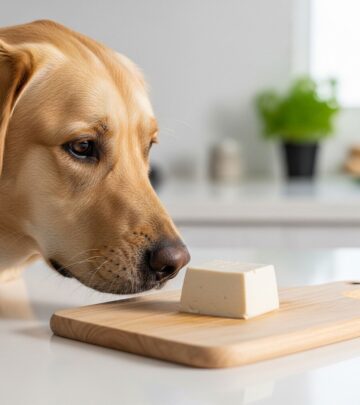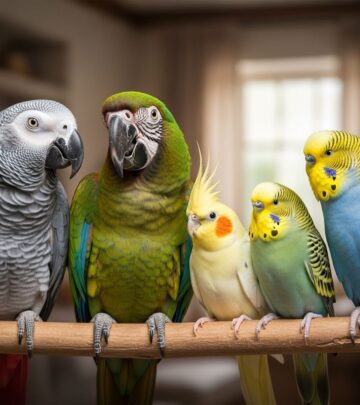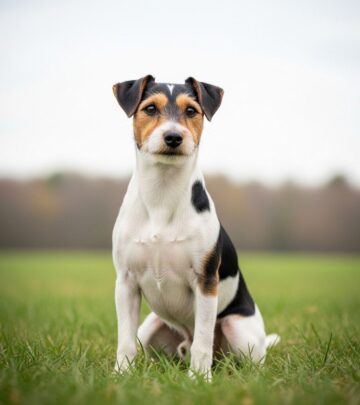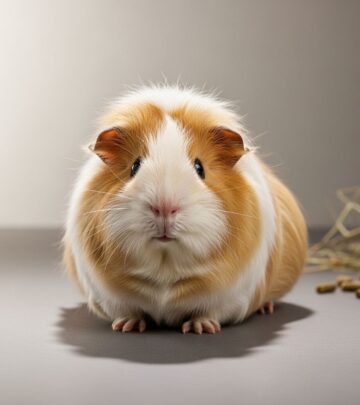Jack Russell Terrier: Complete Guide To Care, Training & Health
Energetic companions offering loyalty, intelligence, and endless playful adventures daily.
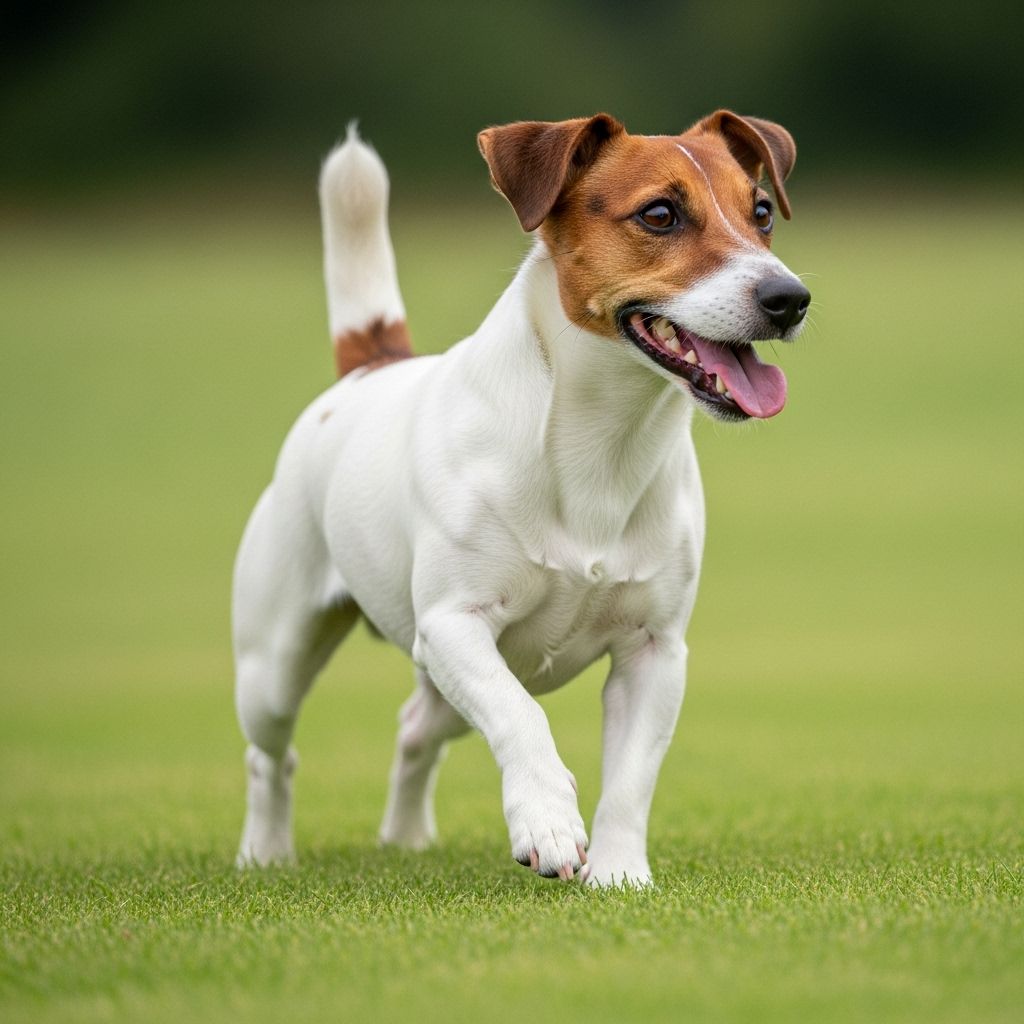
Image: HearthJunction Design Team
Jack Russell Terrier: Breed Information, Care, and Personality
The Jack Russell Terrier is a spirited, energetic, and highly intelligent breed known for its lively personality and boundless enthusiasm. Originally bred for fox hunting, Jack Russells have become cherished companions for those able to match their zest for life. This guide explores all aspects of the Jack Russell Terrier, from history and physical traits to care, health, and training tips.
Breed Overview
- Group: Terrier
- Height: 10 to 15 inches (JRTCA standard), 12 to 14 inches (AKC standard)
- Weight: 13 to 17 pounds
- Coat: Smooth, rough, or broken (a combination of both)
- Color: Primarily white with black, tan, or brown markings
- Life Expectancy: 12-15 years
- Temperament: Energetic, intelligent, affectionate, stubborn, bold
History and Origin
Named after Reverend John Russell, a parson and avid fox hunter from 19th century England, the Jack Russell Terrier was originally developed to flush out foxes from their dens. Reverend Russell aimed to breed a tenacious, agile, and courageous working terrier, resulting in a dog perfectly suited for the task. Over time, the Jack Russell became synonymous with versatility, adapting to various hunting environments and eventually transitioning into modern households as a lively companion.
The breed’s strong working instincts are still highly prized by enthusiasts and breeders today, which accounts for the Jack Russell’s remarkable drive and athleticism.
Physical Characteristics
Size
Jack Russell Terriers are compact, but robust. The Jack Russell Terrier Club of America (JRTCA) standard allows for dogs between 10 and 15 inches tall, while the American Kennel Club (AKC) recognizes a slightly smaller range of 12 to 14 inches. Despite their small stature, Jack Russells are muscular and agile, giving them the speed and power needed for hunting and high levels of activity.
Coat and Color
- Three coat types: smooth, rough, or broken (a mix of the two)
- Primarily white with black, tan, or brown markings
- Coats are weatherproof, offering protection during outdoor excursions
Facial Features
- Expressive dark eyes full of intelligence and curiosity
- Ears are small, V-shaped, and usually fold forward
- Strong jaws and a slightly tapered muzzle
Jack Russell Terrier Personality and Temperament
Jack Russell Terriers are packed with personality—known for their high energy, sharp intelligence, and fearless disposition. These dogs are happiest when given a job to do and plenty of companionship. Left bored or unstimulated, they will invent their own entertainment, which can sometimes result in mischief or destructive behavior.
- Affectionate: Loyal to their families and often form strong bonds with their owners
- Energetic: High stamina and activity level—always ready for action
- Intelligent: Quick learners, but may use their smarts to challenge boundaries
- Bold/Confident: Unafraid to stand up to bigger dogs
- Vocal: Will bark to alert of strangers or when bored
- Independent: Can be stubborn and strong-willed, requiring firm, consistent training
Living Needs and Suitability
- Best for: Active individuals or families, those interested in canine sports, experienced dog owners
- Not ideal for: Apartment dwellers (unless daily exercise is a guarantee), people seeking a calm or low-energy dog
- Children and Other Pets: Jack Russells can do well with children who understand how to interact with dogs, but their assertive, high-energy nature means supervision is advised. They may not get along with smaller pets, as their hunting instincts make them prone to chase.
Exercise Requirements
The Jack Russell Terrier’s energetic nature means they require at least an hour of vigorous exercise each day. Lack of physical or mental stimulation can quickly lead to undesirable behaviors. Activities that can help burn off a Jack Russell’s energy include:
- Long walks or hikes
- Jogging alongside their owner
- Fetch, frisbee, or chase games
- Agility, flyball, or other canine sports
- Training sessions (mental stimulation is critical)
Training and Socialization
Training a Jack Russell Terrier requires patience, consistency, and creativity. Their intelligence and independence make them quick learners, but also prone to testing boundaries. Early socialization and obedience training are crucial to prevent stubbornness, excessive barking, and aggression toward other animals.
- Use positive reinforcement techniques (treats, praise, toys)
- Provide firm but gentle leadership—avoid harsh corrections
- Introduce to various people, pets, and environments from puppyhood
- Challenge their intelligence with advanced commands or tricks
Jack Russells excel at dog sports such as agility, flyball, and advanced obedience, offering outlets for their physical and mental energy.
Grooming and Maintenance
Jack Russell Terriers are relatively low maintenance when it comes to grooming, thanks to their weatherproof coats. Routine care will keep them looking and feeling their best:
- Brush the coat weekly to remove dead hair and distribute skin oils
- Bath only when dirty or as necessary
- Regularly trim nails to prevent cracking or overgrowth
- Clean ears and inspect for wax buildup or signs of infection
- Brush teeth several times a week to maintain oral health
Coat type may influence grooming needs: rough or broken coats might need more frequent brushing to prevent mats or tangles, while smooth coats shed minimally but benefit from occasional grooming.
Health Considerations
Jack Russell Terriers are a generally healthy breed with a long lifespan, often reaching 12 to 15 years. Still, like all breeds, they may be prone to certain health issues:
- Patellar luxation: Kneecap dislocation, common in small breeds
- Lens luxation: Eye condition affecting the lens
- Deafness: Can be hereditary
- Legg-Calvé-Perthes disease: Hip joint disorder resulting in lameness
- Skin conditions: Prone to skin allergies and sensitivities
- Cruciate ligament injury: Knee injuries can occur in active terriers
Routine veterinary care, vaccinations, parasite prevention, and a balanced diet are essential for lifelong well-being. Consider comprehensive insurance, as some hereditary or chronic conditions may require ongoing care.
Nutrition and Feeding
Despite their small size, Jack Russell Terriers require a high-quality, balanced diet formulated for their energy level and age. Key points for feeding include:
- Choose a nutritionally complete dog food meeting AAFCO standards
- Feed measured meals (no free-feeding) to prevent obesity
- Adjust portions based on age, activity, and metabolism
- Provide constant access to fresh, clean water
- Monitor treats—use sparingly, especially during training
Socialization and Lifestyle
The ideal household for a Jack Russell is an active, engaged family or individual willing to invest time in daily exercise, play, and training. Jack Russells thrive on companionship and can become destructive if left alone for long periods. Secure fencing in the yard is also essential—Jack Russells are notorious escape artists and diggers, motivated by their innate hunting drive.
Pros and Cons of Living with a Jack Russell Terrier
| Pros | Cons |
|---|---|
| Extremely loyal and affectionate | Requires significant daily exercise |
| Highly intelligent and trainable | Can be stubborn and independent |
| Long lifespan | May show aggression toward smaller pets |
| Low grooming needs | Prone to barking and digging if bored |
| Excellent watchdog | Not ideal for first-time dog owners |
Frequently Asked Questions (FAQs)
Are Jack Russell Terriers good with children?
Jack Russell Terriers can be good with older children who respect pets, but their high energy and assertive nature may be overwhelming for younger children. Early socialization and supervision are important.
Can Jack Russell Terriers live with other pets?
While some Jack Russells can adapt to living with other pets if introduced as puppies, their strong prey drive means they may see smaller animals (cats, hamsters, rabbits) as prey. Caution and careful introductions are necessary.
How much exercise does a Jack Russell Terrier need?
At least 60 minutes of vigorous physical activity per day, along with ample mental stimulation, is required to keep a Jack Russell happy and healthy.
Are Jack Russell Terriers easy to train?
Their intelligence makes them quick learners, but their independence and occasional stubbornness mean consistent, positive training is a must. Early socialization and firm leadership help prevent behavioral issues.
What are common health issues in Jack Russell Terriers?
Patellar luxation, lens luxation, deafness, Legg-Calvé-Perthes disease, cruciate ligament injuries, and skin conditions are the most common. Regular vet checkups and preventive care are advised.
Conclusion: Is the Jack Russell Terrier Right for You?
The Jack Russell Terrier is an intelligent, energetic, and loyal breed that thrives in active homes with experienced owners. Their lively temperament, paired with a strong desire for companionship and purpose, makes them a rewarding—yet sometimes challenging—pet. If you lead an active lifestyle and are seeking an affectionate, courageous, and endlessly entertaining companion, the Jack Russell Terrier could be your ideal match.
References
- https://www.akc.org/dog-breeds/russell-terrier/
- https://www.hillspet.com/dog-care/dog-breeds/jack-russell-terrier
- https://en.wikipedia.org/wiki/Jack_Russell_Terrier
- https://www.thesprucepets.com/jack-russell-terrier-dog-breed-profile-4773883
- https://www.petplan.co.uk/pet-information/dog/breed/jack-russell-terrier/
Read full bio of Anjali Sayee






